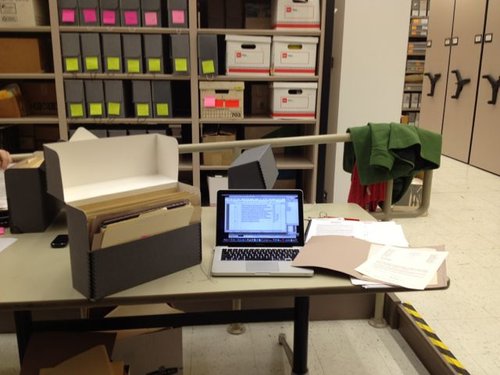Finding the Right Fit for Your Collection
Most importantly, a repository will only accept your donation if it fits within their collection policies and goals. Archivists consider which histories are already represented in their collections and which ones are missing when deciding whether to accept a collection. You can do a bit of digging into this yourself if the institution in question has their finding aids or catalogs online. This is also often where you can find collection policies and guidelines to learn about the general scope of that specific repository.

Think about your own collection and what it represents. Some questions to ask yourself include:
- Who made the materials in the collection? Why, where, and when were they created?
- What are the materials in the collection (letters, memoirs, e-mails, diaries, blogs, scrapbooks, speeches/lectures, articles/essays, legal documents, minutes/reports, brochures/flyers, awards/certificates, digital or printed photos, posters, audio-visual tapes, CDs/DVDs, records, objects, websites, etc.)?
- What story does this collection tell? What topics are covered?
- How big is the collection? Will you continue to add to the collection (keeping it open), or will it be closed (not accepting more materials)?
- How organized is the collection? How long will it take to process?
Answering these questions and researching the collections each repository already houses can help you think about how well your collection fits there. After reading and asking about an institution’s collection policies and goals, you can compare them to your collection to see if it would be a good match.
Know the questions that archivists ask themselves when considering a collection for acquisition, such as:
- What are our collection priorities and goals?
- What collections do we already have?
- What do our researchers or patrons want to see?
- Do we have the resources necessary to responsibly preserve and provide access to this collection?
- What condition are these materials in? Have they been damaged by water, mold, or other forms of wear that would require conservation and preservation?
- Do these materials need to be digitized? Are they already digitized, and do they require digital preservation?
- How organized or processed is this collection? How long will it take to complete processing?
Once you have selected a repository as the home for your collection, you can begin the process of transferring your materials into their care.
This resource was first created by Jehoiada Calvin (f.k.a. T Calvin), BMRC Community Engagement Archivist, in 2020, and edited by him in 2022.
